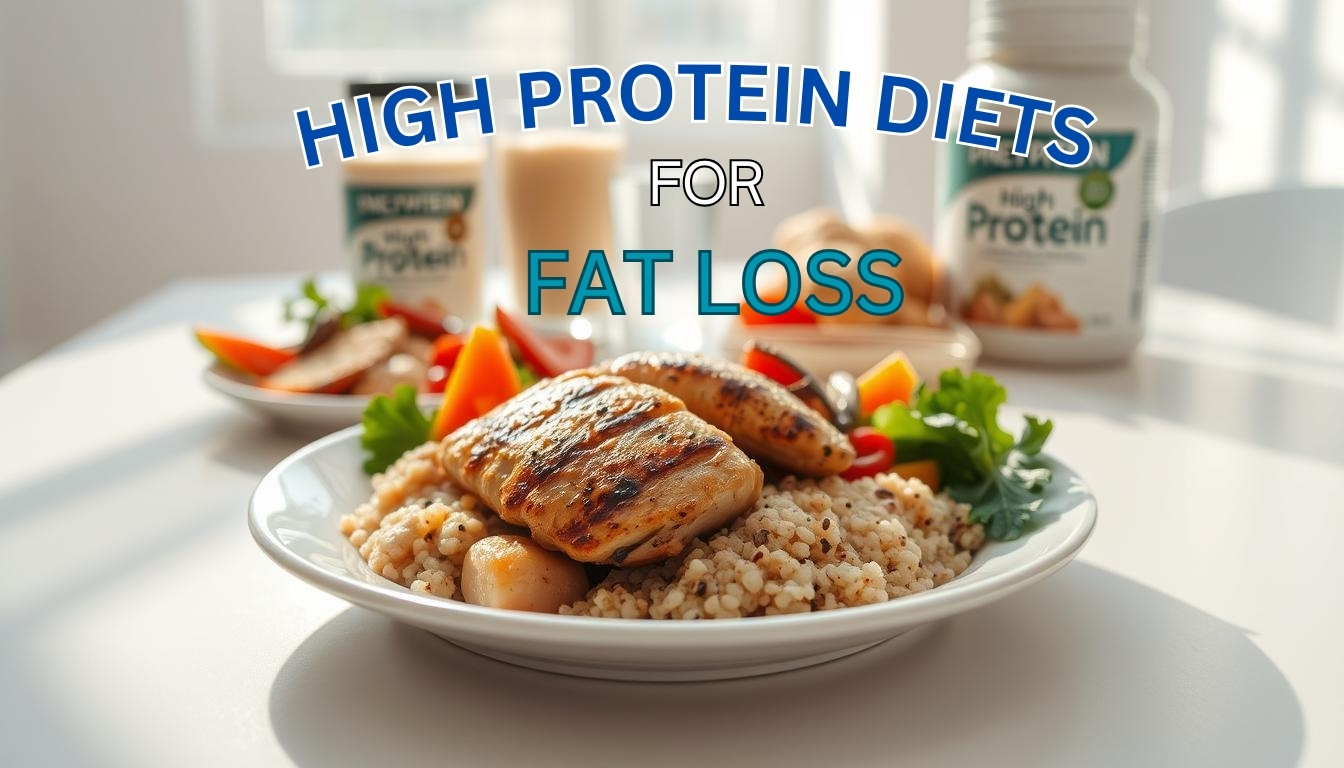High Protein Diets for Fat Loss
Did you know that increasing your protein intake can help your body burn up to 100 extra calories a day? That’s like adding a short jog to your routine without even moving! If you’re looking to shed fat while keeping your energy levels high, focusing on protein might be the game-changer you need.
Protein is one of the three essential macronutrients, and it plays a huge role in building and repairing tissues. But its benefits go beyond that. When you eat more protein, your body works harder to digest it, which boosts your metabolism. This is known as the thermic effect of food, and it’s one reason why protein is so effective for weight loss.
Not only does protein help you burn more calories, but it also keeps you feeling full longer. This means fewer cravings and less snacking. Plus, it helps preserve muscle mass, which is crucial when you’re aiming to lose fat. For more tips on balancing your meals, check out this high-protein diet plan.
Ready to transform your body composition? Let’s explore how a protein-focused approach can help you achieve your goals.
Unlocking the Power of Protein for Fat Loss
Protein isn’t just for building muscle—it’s a fat loss powerhouse. It works in two key ways: boosting your metabolism and keeping your appetite in check. Let’s break it down.
Role of Protein in Boosting Metabolism
When you eat protein, your body works harder to digest it. This is called the thermic effect of food. It means you burn more calories just by eating. For example, a lean protein breakfast like eggs can kickstart your metabolism for the day.
Protein also helps your body maintain muscle. Muscle burns more calories than fat, even at rest. So, the more muscle you have, the higher your metabolic rate. This makes protein a key player in fat loss.
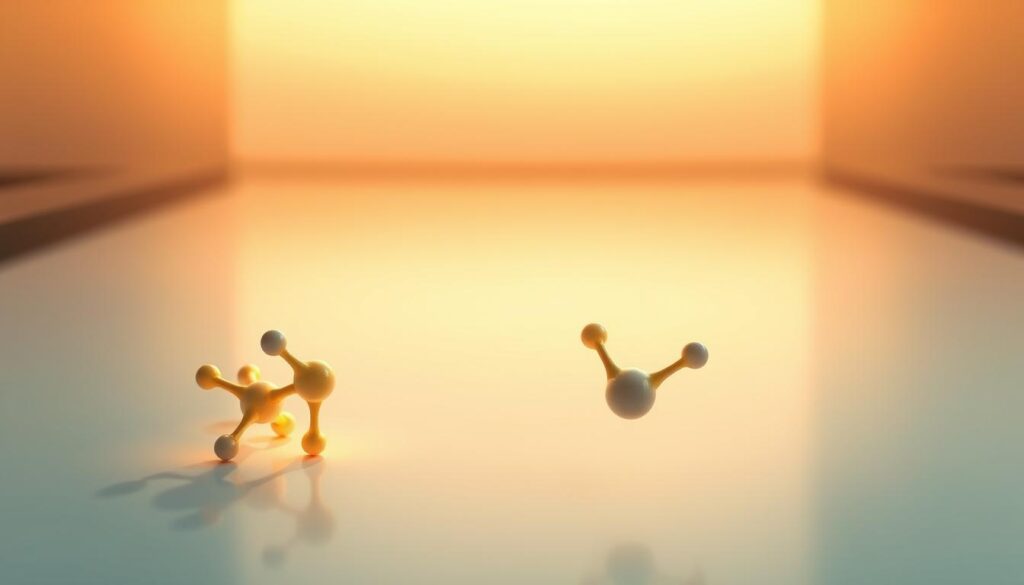
Protein and Appetite Regulation
Protein helps control hunger by influencing hormones. It increases the release of PYY and GLP-1, which make you feel full. At the same time, it lowers ghrelin, the hunger hormone. This means fewer cravings and less snacking.
For instance, a protein-rich snack like Greek yogurt can keep you satisfied for hours. This makes it easier to stick to your calorie goals without feeling deprived.
Protein-rich foods are also a great source of energy and essential nutrients. They help your body function at its best while supporting your fat-loss goals. For more tips on maximizing protein’s benefits, check out this guide on protein’s role in fat.
Benefits of a High Protein Diet for Fat Loss
Ever wondered why some people lose fat while keeping their muscles intact? The answer often lies in their intake of protein. Research shows that increasing your protein amount can help you achieve better body composition and boost your metabolism.
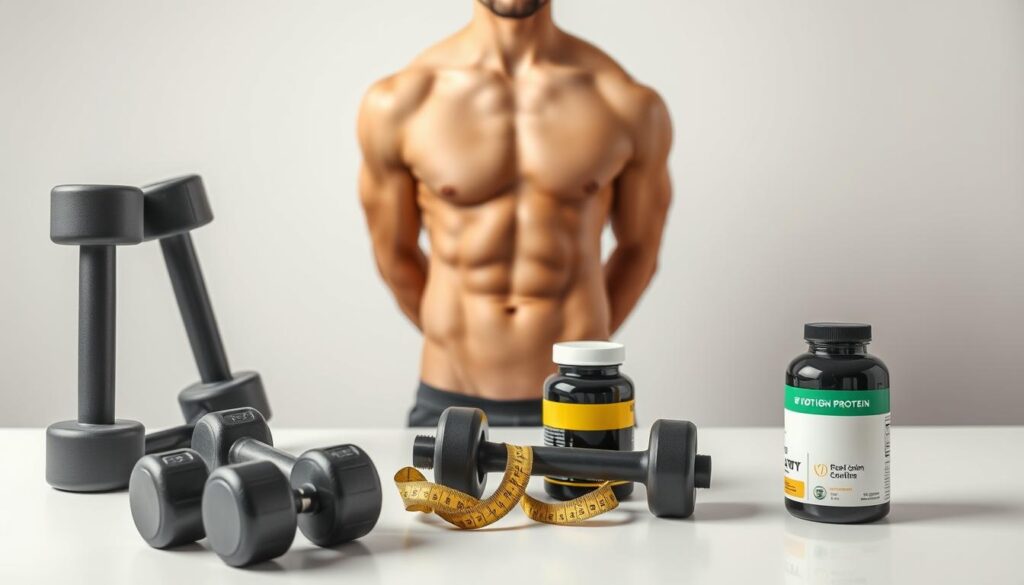
Improved Body Composition and Muscle Retention
When you’re trying to lose fat, the last thing you want is to lose muscle. Protein helps prevent this. Studies show that a higher protein intake preserves muscle mass, even during a calorie deficit. This means you’re not just losing fat—you’re keeping the muscle that keeps you strong and healthy.
For example, a 2022 review found that increased protein intake significantly improved muscle retention in older adults. This principle applies to all ages, making protein a key player in achieving a leaner, more toned physique.
Enhanced Caloric Burn and Metabolic Rate
Protein doesn’t just help you retain muscle—it also boosts your metabolism. The thermic effect of food means your body burns more calories digesting protein compared to fats or carbs. A 2018 study found that protein has the highest thermic effect, at 20% to 30%.
This means that by increasing your protein amount, you’re not just fueling your body—you’re also helping it burn more calories. Over time, this can lead to significant fat loss without drastic changes to your routine.
So, if you’re looking to lose fat while keeping your energy levels high, consider upping your protein intake. It’s a simple, science-backed way to transform your body composition and achieve your goals.
Determining Your Daily Protein Needs
Figuring out how much protein you need daily can feel like solving a math problem, but it’s simpler than you think. Your body weight, activity level, and goals all play a role. Let’s make it easy to calculate your ideal intake.
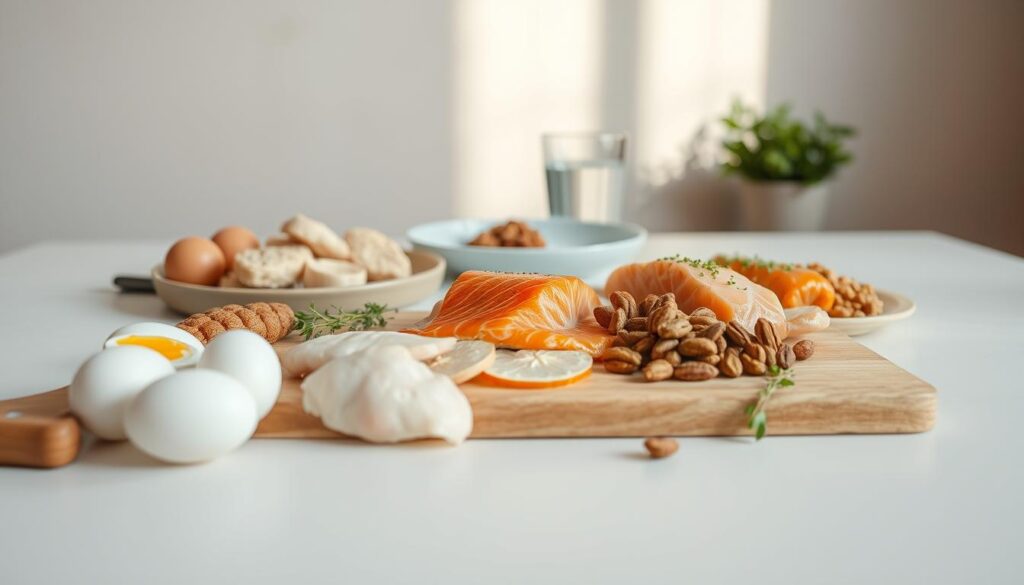
Calculating Protein per Body Weight
Start by converting your weight to kilograms. For example, a 150-pound person weighs about 68 kilograms. Multiply this by the recommended gram range of 0.8 to 2.0, depending on your activity level. Here’s a quick guide:
- Minimal activity: 0.8 to 1.0 gram per kilogram.
- Moderate activity: 1.3 gram per kilogram.
- Intense activity: 1.6 to 2.0 gram per kilogram.
For a 150-pound person, this means 54 to 136 grams daily. Spread this across meals for steady energy.
Not all protein sources are created equal. Focus on high-quality options like eggs, lean meats, and plant-based choices. These provide essential amino acids your body needs.
If you have kidney concerns, consult a doctor. High protein intake may not be suitable for everyone. For most, up to 2 grams per kilogram is safe and effective.
Activity level matters too. A gym-goer needs more protein than someone with a desk job. Adjust your intake based on your lifestyle for the best results.
Meal Planning with High Protein Diets
Planning meals with a focus on protein can make fat loss feel effortless and delicious. Whether you’re prepping for the week or looking for quick snacks, these ideas will keep you on track without the stress.
Sample Meal Plan for a Day
Here’s a simple, protein-packed meal plan to get you started. It’s designed to keep you full and energized throughout the day.
- Breakfast: Scrambled eggs with spinach and a slice of whole-grain toast. Add a dollop of Greek yogurt for extra creaminess.
- Lunch: Grilled chicken salad with mixed greens, cherry tomatoes, and a sprinkle of feta cheese. Dress it with olive oil and lemon juice.
- Dinner: Baked salmon with quinoa and steamed broccoli. Pair it with a side of roasted sweet potatoes for a balanced meal.
This plan ensures steady protein intake while keeping meals varied and satisfying. For those with disease concerns, consult a doctor to tailor this plan to your needs.

Creative Snack Ideas
Snacking doesn’t have to derail your progress. These protein-rich options are easy to prepare and perfect for busy days.
- Dairy Delight: Cottage cheese with fresh berries and a drizzle of honey. It’s a sweet and savory treat packed with nutrients.
- Protein Bites: Mix oats, peanut butter, and a scoop of protein powder. Roll into balls and refrigerate for a quick grab-and-go snack.
- Veggie Boost: Hummus with sliced cucumbers and bell peppers. Add a handful of almonds for extra crunch and protein.
These snacks are not only convenient but also help curb cravings. For example, pairing dairy with fresh fruit creates a balanced, satisfying option.
By incorporating these meal and snack ideas, you’ll stay on track with your goals while enjoying a variety of flavors. Remember, consistency is key to seeing results!
High Protein Diets: Transforming Your Weight Loss Journey
What if the key to losing weight was as simple as tweaking what’s on your plate? Research shows that focusing on food high in protein can be a game-changer. Studies consistently highlight its role in boosting metabolism and keeping hunger at bay.
One study found that increasing protein intake can reduce cravings for sugary snacks. By keeping you fuller longer, it helps you avoid those mid-afternoon energy crashes. For example, swapping a bag of chips for a handful of nuts can make a big difference.
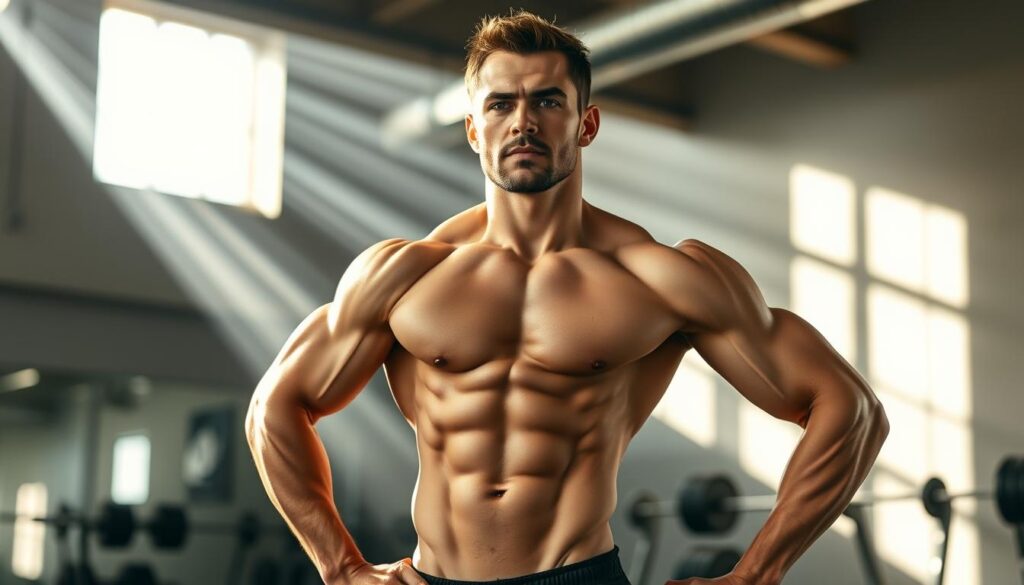
Success stories abound. Take Sarah, who lost 20 pounds in three months by adding more lean meats and plant-based proteins to her meals. She noticed not just weight loss but also improved energy levels and better muscle tone.
The benefits of this approach go beyond the scale. Protein helps maintain muscle mass, which is crucial for a healthy metabolism. It also supports better body composition, making you feel stronger and more confident.
Ready to start your journey? Learn more about how protein aids weight loss and take the first step toward a healthier you.
Eating Strategies: Low Carb, Plant-Based, and More
Finding the right eating strategy can feel like solving a puzzle, but it doesn’t have to be complicated. Whether you’re cutting carbs, going plant-based, or just looking for balance, there’s a plan that fits your lifestyle. Let’s explore how to make it work for you.
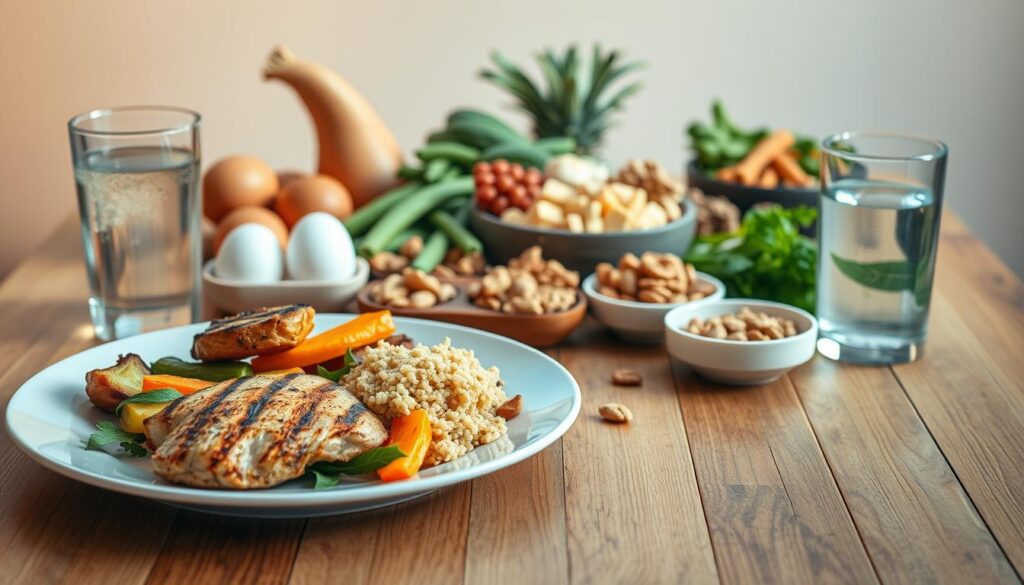
Customizing Your Diet to Fit Your Lifestyle
Not everyone thrives on the same plan. A protein diet can be tailored to your needs, whether you’re low-carb, dairy-free, or plant-based. The key is ensuring you’re getting enough protein to support your goals.
For example, a low-carb approach focuses on reducing grain and sugary foods while emphasizing lean meats and veggies. This can help stabilize blood sugar levels and keep cravings at bay. On the other hand, a plant-based plan relies on beans, lentils, and tofu for protein, offering a sustainable option for those avoiding animal products.
Your body’s signals, like hunger and energy levels, are influenced by hormones. A well-balanced diet can help regulate these signals, making it easier to stick to your plan. For instance, pairing whole grains with protein-rich foods can keep you full longer and prevent energy crashes.
Flexibility is key. You don’t have to give up your favorite foods—just find smarter ways to enjoy them. Swap white rice for quinoa, or try a plant-based protein shake instead of a sugary snack. Small changes can make a big difference.
For more tips on balancing your meals, check out this guide to high-protein, low-carb diets. It’s packed with practical advice to help you stay on track.
Navigating Common Challenges on a High Protein Diet
Adjusting to a protein-focused eating plan isn’t always smooth sailing—here’s how to tackle the bumps. While increasing your intake can boost metabolism and curb hunger, it’s important to address potential hurdles like health concerns and food quality.

Managing Health Concerns and Food Quality
One of the first challenges is ensuring you’re getting much protein without compromising overall health. For example, while protein is essential, too much can strain the kidneys, especially if you have pre-existing conditions. Monitoring your intake and staying hydrated can help mitigate this risk.
Another key factor is maintaining nutrient balance. A diet heavy in protein might lack essential vitamins and minerals if you’re not careful. Incorporate a variety of foods to ensure you’re getting all the amino acids your body needs. Think lean meats, fish, legumes, and even dairy for a well-rounded approach.
Tracking your body weight during this transition is also crucial. Sudden changes in diet can lead to fluctuations, so keep an eye on how your body responds. If you’re feeling sluggish or experiencing digestive issues, it might be time to reassess your meal plan.
Here are some practical tips to make the adjustment easier:
- Start slow—gradually increase your protein intake to let your body adapt.
- Choose high-quality sources like eggs, chicken, and plant-based options to ensure you’re getting all essential amino acids.
- Stay hydrated to support kidney function and overall health.
- Monitor your body weight and energy levels to ensure you’re on the right track.
By addressing these challenges head-on, you can enjoy the benefits of a protein-rich diet without the stress. Remember, it’s about finding what works best for your body and lifestyle.
Incorporating Variety with Lean Proteins and Plant Sources
Switching up your protein sources can make meals exciting and nutritious. By including both lean meats and plant-based options, you ensure your body gets all the essential nutrients it needs. This variety not only keeps your diet interesting but also supports your fitness goals.
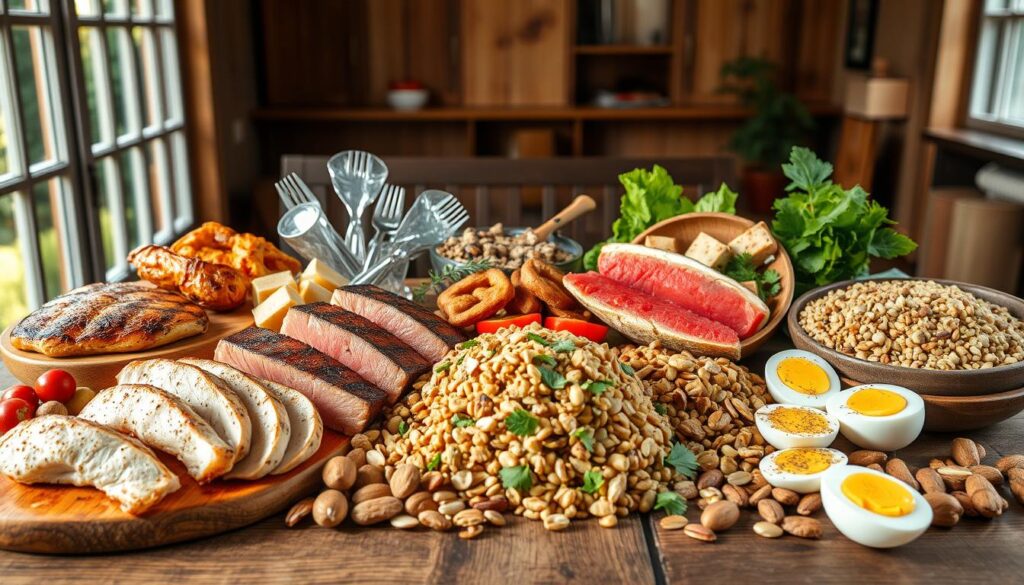
Benefits of Lean Meats and Seafood
Lean meats like chicken, turkey, and seafood are excellent sources of high-quality protein. They provide all the essential amino acids your body needs to build and repair muscle. For example, a 3-ounce serving of salmon delivers about 22 grams of protein, along with heart-healthy omega-3 fatty acids.
These options are also lower in saturated fats compared to red meats. This makes them a great choice for maintaining a healthy heart while still getting the right amount protein for muscle retention. Plus, they’re versatile—grilled, baked, or sautéed, they fit into any meal plan.
Exploring Plant-Based Protein Options
Plant-based proteins are not just for vegetarians. Foods like lentils, tofu, and quinoa are packed with nutrients and offer a sustainable source protein. For instance, one cup of cooked lentils provides about 18 grams of protein, along with fiber and iron.
These options are also rich in amino acids, though some may lack one or two essential ones. Combining different plant proteins, like rice and beans, can create a complete amino acid profile. This ensures your body gets all the building blocks it needs for muscle repair and growth.
Here are some creative ways to include plant-based proteins in your diet:
- Breakfast: Add chia seeds or hemp seeds to your morning smoothie for an extra protein boost.
- Lunch: Try a quinoa salad with black beans and roasted veggies for a filling, nutrient-packed meal.
- Snack: Enjoy hummus with sliced veggies or whole-grain crackers for a quick and healthy option.
By mixing lean meats and plant-based proteins, you can enjoy a balanced diet that supports your health and fitness goals. Experiment with different recipes to find what works best for you!
Practical Tips for Meal Prep and Tracking Protein Intake
Meal prep doesn’t have to be overwhelming—start small and see big results. With a little planning, you can save time, money, and stay on track with your goals. Whether you’re a beginner or a pro, these tips will make meal prep and tracking your intake a breeze.
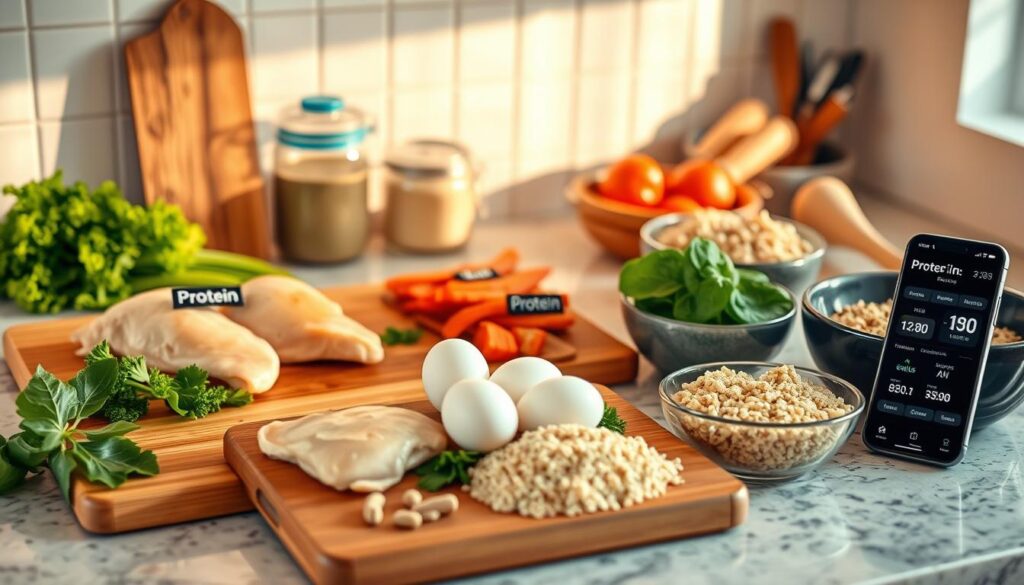
Using Food Diary Apps for Better Tracking
Food diary apps are a game-changer for tracking your meals. They help you log your content easily and provide insights into your nutritional intake. Apps like MyFitnessPal or Cronometer let you scan barcodes, input recipes, and track macros like protein, carbs, and fats.
For example, if you’re adding a meal with beans or cheese, the app will break down the protein content for you. This makes it easier to ensure you’re hitting your daily goals without guesswork.
Here’s how to get started:
- Choose an app: Pick one that fits your lifestyle and has a user-friendly interface.
- Log consistently: Make it a habit to log your meals right after eating.
- Review your progress: Use the app’s insights to adjust your meals and stay on track.
Evaluating nutrition labels is another key step. Look for the protein content per serving to make informed choices. For instance, a can of beans might have 7 grams of protein, while a slice of cheese offers about 6 grams.
Quick, protein-dense snacks can also keep you fueled throughout the day. Try a handful of nuts, a slice of cheese, or a small bowl of beans. These options are not only convenient but also packed with nutrients.
Keeping a record of your meals can significantly improve your diet adherence. It helps you identify patterns, like when you’re more likely to snack, and make adjustments. Plus, it’s satisfying to see your progress over time.
By using these tips, you’ll simplify meal prep and tracking, making it easier to stick to your goals. Start small, stay consistent, and watch how these small changes lead to big results.
Balancing Your Diet: Integrating Fats and Carbs with Protein
Balancing your meals isn’t just about protein—it’s about harmony. While protein is essential, your body needs a mix of macronutrients to function at its best. Including healthy fats and carbs ensures you’re not just fueling your muscles but also supporting your overall health.
Ensuring Nutritional Completeness
A well-rounded diet includes more than just one macronutrient. Carbohydrates provide energy, fats support brain health, and protein repairs tissues. Together, they create a nutrient-dense meal plan that keeps you energized and satisfied.
Healthy fats, like those found in nuts and fish, are crucial for heart health and hormone production. For example, a handful of almonds or a serving of salmon adds essential omega-3s to your diet. These products not only taste great but also complement your protein intake.
Carbs often get a bad rap, but they’re vital for energy. Whole grains, fruits, and vegetables provide fiber and essential vitamins. Pairing them with protein-rich foods creates a balanced meal that keeps you full longer.
Here are some tips for building a nutrient-rich plate:
- Add a handful of nuts to your salad for crunch and healthy fats.
- Include lean fish like salmon or tuna for a boost of omega-3s.
- Choose whole-grain products like quinoa or brown rice for sustained energy.
- Mix and match colorful veggies to get a variety of vitamins and minerals.
Even when focusing on protein, don’t neglect other food groups. A balanced diet ensures you’re getting all the nutrients your body needs to thrive. By integrating fats, carbs, and protein, you’ll create meals that are both delicious and nutritious.
Wrapping Up Your High Protein Transformation
Transforming your eating habits doesn’t have to be complicated—focusing on higher protein options can make it simple and effective. By aiming for around 1 to 1.2 grams per kilogram of body weight, you’ll support muscle retention and keep your metabolism active. This approach not only helps you lose weight but also keeps you feeling full and energized throughout the day.
Personalizing your journey is key. Whether you’re adding lean meats, plant-based sources, or creative snacks, find what works for your lifestyle. Tracking your progress with apps or a food diary can help you stay on course and make adjustments as needed.
Ready to take the next step? Explore more expert tips and resources to sustain your higher protein lifestyle. Small changes today can lead to big results tomorrow—start your transformation now!
